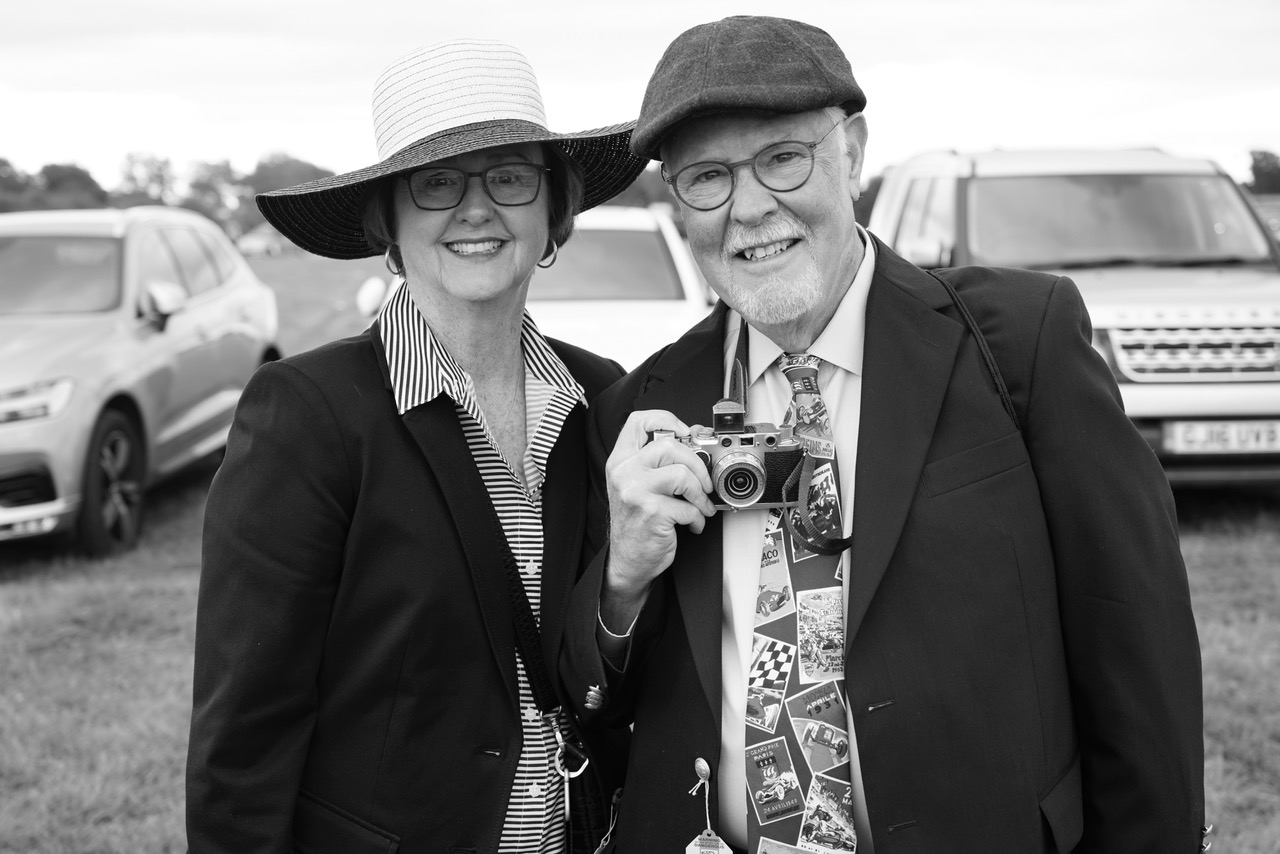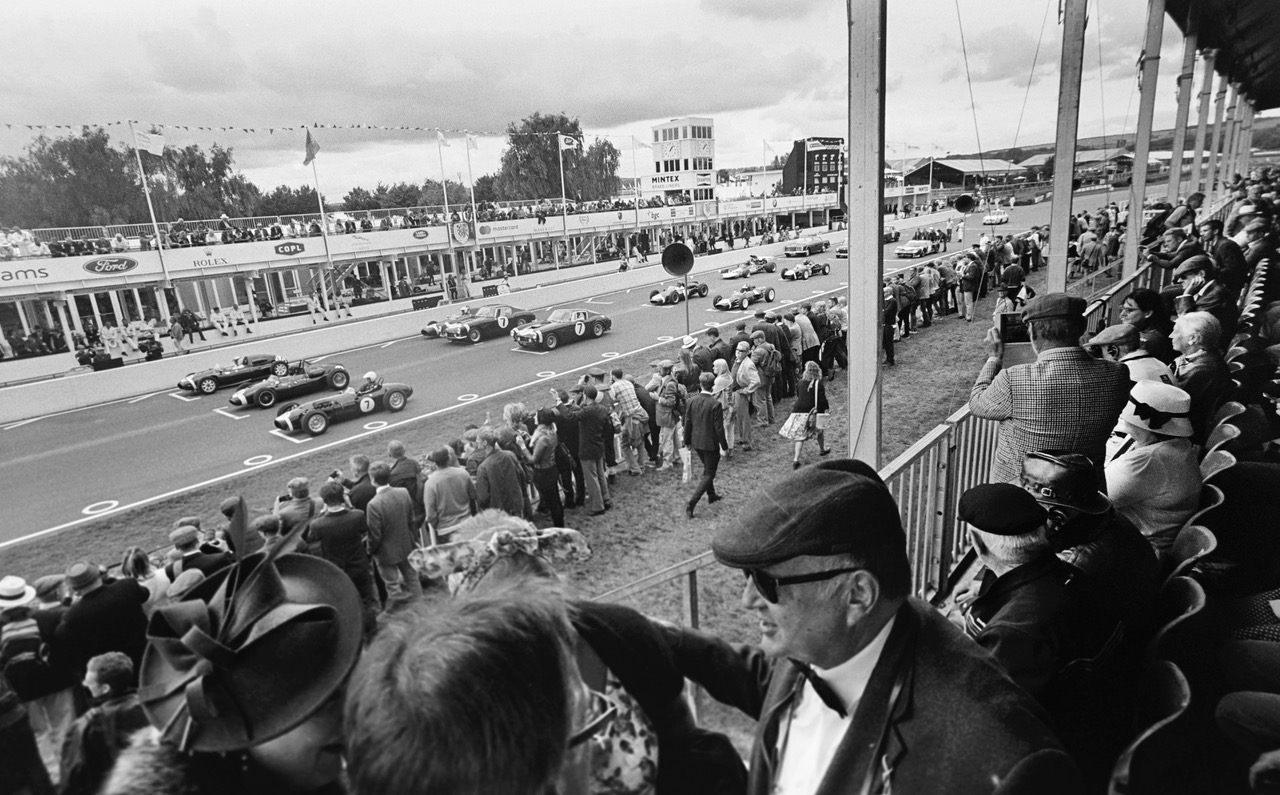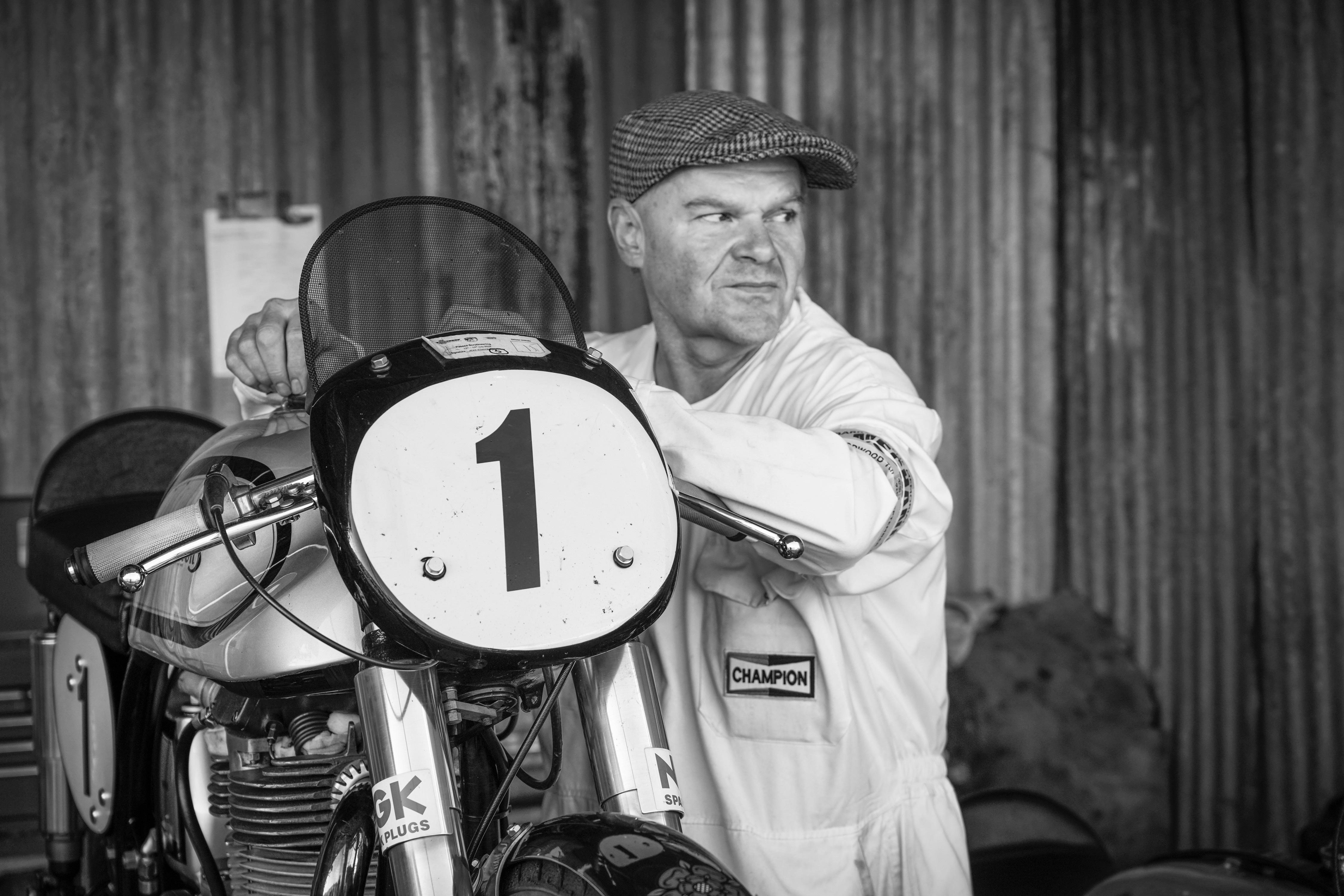
The Goodwood Revival historic race meeting has been on my bucket list for years and this year my wife and I were there. Although not attending as credentialed media, I wanted to use period-style black-and-white photography to showcase the people and cars that make the Revival such a vivid experience.
In addition to modern digital equipment I plucked my dad’s Leica IIIF, circa 1950-1957, from my office bookshelf and hoped that it still worked properly.
A vintage camera, at least for a couple of rolls of 35mm Tri-X, fit perfectly in the Revival spirit.

My dad, Robert Strongman, died in 2002. He was a Central Illinois newspaper photographer who also liked cars and in 1953 sold photos to Road & Track from the SCCA race at Chanute Air Force Base. He most likely used this Leica for them.
The Revival, celebrating its 20th anniversary, is in West Sussex, England, not far from the town of Chichester. The event is a purposeful time warp, a re-enactment of the glory days when the Goodwood Motor Circuit brought new life to motor racing in Britain after World War II. The facility looks as much like 1966 as possible. Spectators attend in period dress and no modern vehicles are allowed inside the perimeter. Vintage aircraft park in the grass infield and do a daily fly-over.
The Revival includes Grand Prix cars from the 1950s and ‘60s, sports and GT cars, as well as historic saloon cars and little-seen Formula Juniors. Many of these important historic racing cars are driven by famous names from motor sport past and present.
One of the cutest events is the Settrington Cup in which youngsters pedal mini-Austin J40s down the front straight.

The circuit is on the estate of the Duke of Richmond and Gordon and surrounds a grass airfield that was home to an RAF squadron in World War II. The circuit was derived from a perimeter road that pilots often drove to let off steam after returning from sorties.
In September 1948 the Goodwood Motor Circuit was host to Britain’s first post-war motor race on a permanent track. The 9th Duke of Richmond and Gordon, known as Freddie March, officially opened the track in 1948 by driving around the Circuit in a Bristol 400, at that time Britain’s state-of-the-art sporting saloon.
For 18 years the track held events such as Formula One — including Stirling Moss’ nearly fatal 1962 crash that ended his driving career – the Goodwood Nine Hours and the famous Tourist Trophy. It closed in 1966.
In 1998, Freddie March’s grandson, Charles Gordon-Lennox, now the 11th Duke of Richmond and Gordon, founded the Goodwood Festival of Speed and the Goodwood Revival. When the track reopened that September, he once again drove around the circuit in the same Bristol 400 saloon that his grandfather piloted at the track’s opening in 1948.

Walking around the meticulously crafted grounds, it looks and feels as though the clock has been turned back to 1948. Additional buildings have been added as the Revival has grown in size and scope, but they retain the look and style of the 1950s. There are storefronts for vintage clothes, auto parts, car dealers, a theater, a fashion show and several shops that will cut your hair cut in a 1950s style. The paddock is a humble place with simple wood stalls for each car, even those costing millions.
The Revival is as much a happening as it is a motor race, and this year, on the second weekend in September, some 146,000 spectators danced, laughed, paraded, and guzzled their way through three beautiful sunny days.
Spectators take period dress seriously. You see everything from World War II uniforms and mechanic coveralls to furs and fancy dresses. An infield tent is home to a champagne bar, dance contests and high tea in the afternoon.
While vigorous on-track racing is the main focus of the weekend the spectators are like an audience whose improvisation creates an entirely new play every hour.

Make no mistake; the Revival is not a high-speed parade of classic cars. The races run over three days are full out, fender-to-fender (and then some) races.
Several very expensive cars had minor shunts in the heat of battle, and Steve Soper rolled his Lotus Cortina on Sunday afternoon.
he grid for the Kinrara Trophy was surreal. Conservatively valued at more than $200 million, it contained 10 Ferrari 250 GTs, several E-type Jags, an Aston Martin DB4GT and a Cobra or two. The winner was the 1961 Ferrari 250 GT “Breadvan” co-driven Niklas Halusa and Emanuele Pirro, former F1 driver and five-time Le Mans winner.
The Revival is also open to motorcycles, and one of the most exciting races of the weekend came when Troy Corser erased a huge gap and passed every rider, including Isle of Man legend John McGuinness on a Norton Manx, riding Herbert Schwab’s 1929 R57 supercharged BMW. The video of his nearly suspension-less bike bouncing over bumps, him reaching across the tank with his left hand to change gears on the right side so he didn’t have to let go of the throttle, is mesmerizing.
Some might complain that the near carnival atmosphere of the Revival overshadows the high-quality racing, but I think one enriches the other. It’s a must-see event for serious enthusiasts.






Wonderful story Tom and we were there!
Proud to have you as a Friend!
Tom has captured the era as only he can do….absolutely magnificent!
Most importantly, I believe, is the legacy his Dad left, and how it was celebrated at Goodwood….way to go, Tom, your Dad is proud!!
Well done, my good friend, well done!